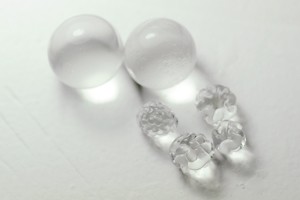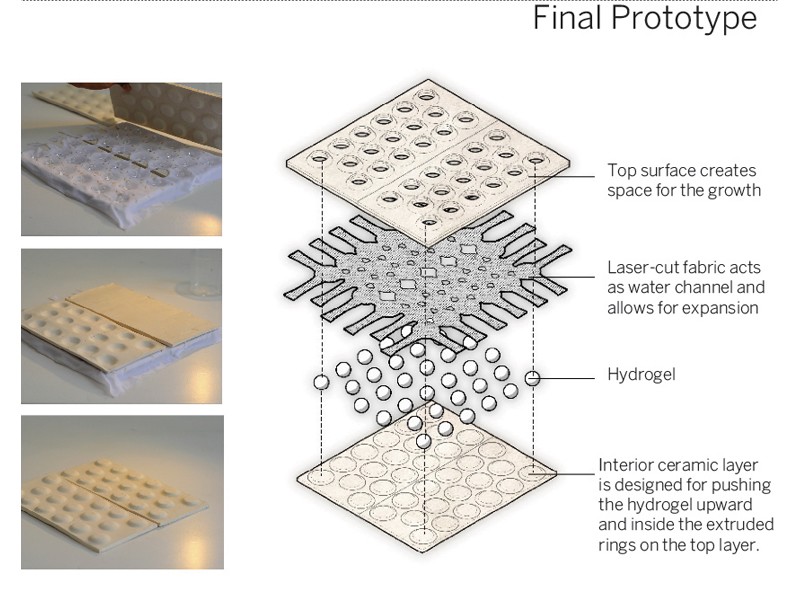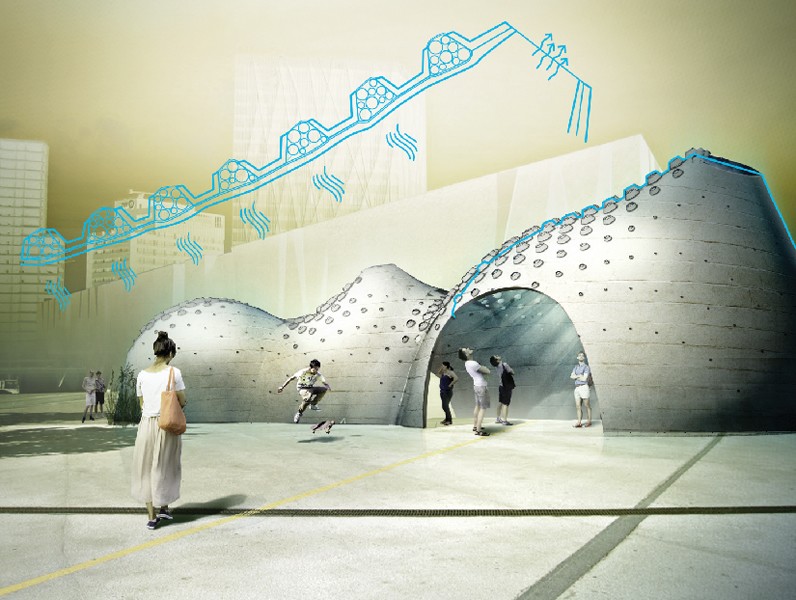Students at Barcelona’s Institute for Advanced Architecture of Catalonia (IaaC) have created a composite material that has the ability to lower the interior temperatures of buildings by up to five degrees when actuated.
Called Hydroceramic, the façade prototype is made of fabric, clay and hydrogel, a polymer which expands in water up to 400 times of its volume. Made predominantly of water (98%), hydrogel cools down its surroundings as it evaporates in warm environments, a process which returns it back to its original solid state.
 The incorporation of the slow-evaporating hydrogel into ceramic allows Hydroceramic to act as a responsive cooling system for buildings. Sandwiched between a supporting clay layer, a stretchable fabric, and an exterior ceramic layer, the hydrogel expands when it is exposed to water (rain), and evaporating when it is warm.
The incorporation of the slow-evaporating hydrogel into ceramic allows Hydroceramic to act as a responsive cooling system for buildings. Sandwiched between a supporting clay layer, a stretchable fabric, and an exterior ceramic layer, the hydrogel expands when it is exposed to water (rain), and evaporating when it is warm.
The water from the evaporation is absorbed by the ceramic, which passes on the ‘coolth’ to the surroundings. However, when the surrounding is cool, little evaporation occurs so the system does not cool enclosed spaces.
According to the students, using the Hydroceramic composite material will allow households to set their air conditioning systems four degree Celsius higher than usual, which will save 28 per cent or 80 kWh of total power consumption. This also translates to a 56.6kg reduction of carbon emission every month.


They claim that Hydoceramic can be used in buildings with well-designed natural ventilation systems, which will help to sustain the balance between decreased temperatures and increased moisture.
Because of the composite materials’ low cost of production, and the abundance of clay as a natural resource, they also suggest the viability of the system for architecture in remote areas.


Images: IaaC and designboom

